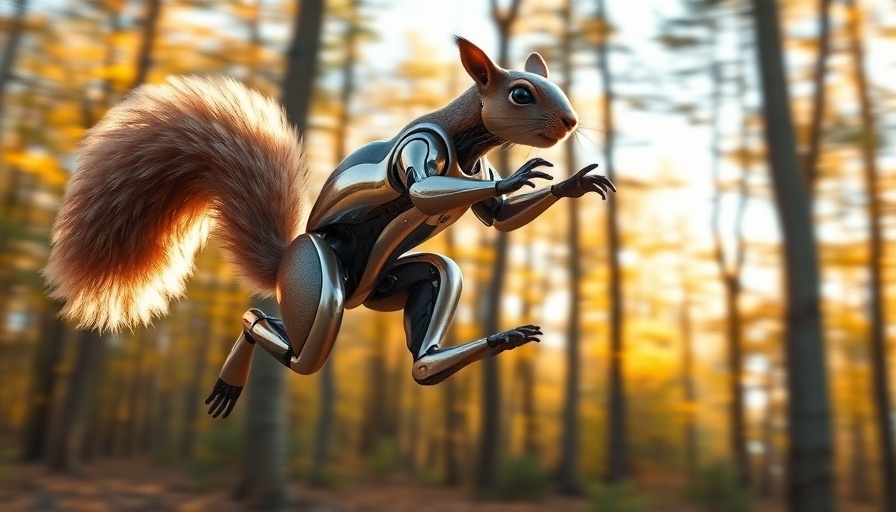
The Leap into Innovation: Nature Inspires Robotics
At the intersection of biology and engineering lies a remarkable innovation: a leaping robot designed with inspiration from the agile movements of squirrels. While robots have mimicked crawling, swimming, and flying, the precision of a squirrel’s leap remains unmatched. Researchers from the University of California, Berkeley, have drawn insights from the biomechanics of these animals to develop a robot that not only hops but can also land perfectly on a narrow perch. This engineering breakthrough, announced in the March 19 issue of Science Robotics, promises to enhance the functionality of robots in varied applications, from rescue operations to environmental monitoring.
Understanding Squirrel Biomechanics
Squirrels are celebrated as nature's agile acrobats, capable of navigating complex tree structures with extraordinary skill. The driving force behind this ability lies in their impressive biomechanics, which allow them to adjust mid-air and alter their landing strategies. Professor Robert Full, a senior author of the study, emphasizes squirrels' innate agility, explaining, “The idea is to define the control strategies that give the animals a wide range of behavioral options.” These insights informed the development of the Salto robot, which mimics these adaptations. By understanding how squirrels maintain balance and navigate gaps, researchers are not only enhancing robotics but unlocking new potentials for automation in unpredictable environments.
Transforming Robot Navigation
The leap from theory to practice requires intricate programming and advanced engineering techniques. Justin Yim, a former graduate student involved in the project, notes the challenges they faced, saying, “The challenge was to stick the landing while hitting a specific point.” This required the robot to mimic human-like responses to balance and posture adjustments during jumps. As a result, Salto can anticipate its movements and react accordingly—without losing stability as it lands. From emergency rescues in urban environments to environmental assessments in forested areas, the applications of this leapfrog technology could make robots significantly more useful and versatile.
The Environmental Impact and Future Applications
Tapping into these biological insights could have profound implications for various fields, including construction, wildlife monitoring, and search and rescue operations. Imagine a robot navigating through debris during a disaster, assessing dangerous obstacles with precision while providing crucial data to human responders. The ability to move freely among construction beams or tree branches can significantly enhance our ability to monitor endangered species or assess forest health. As engineering continues to draw inspiration from the natural world, the future promises more robust and adaptable robotic applications.
Local Innovations Echoing Global Needs
This local project underscores a global movement toward increased robotics integration into everyday life, highlighting the innovative spirit of communities like Dallas, where technological advancements shape lifestyles and industries. As robotics become part of local infrastructure, understanding their capabilities will enhance living in dynamic urban areas. Dallas, recognized for its burgeoning tech scene, can serve as a vital hub for such cutting-edge innovations.
Challenges and Ethical Considerations
Despite the advancements presented by these new technologies, ethical questions and challenges arise. As with any significant technological leap, issues surrounding automation in the workplace, public safety, and privacy must be addressed. Conversations surrounding the potential displacement of jobs due to robotic automation must include both the benefits and disadvantages of widespread technological integration. Engaging local communities in discussions regarding these developments ensures a comprehensive understanding and collective approach to mitigate challenges.
Conclusion and Call to Action
The breakthroughs in robotics inspired by nature open up numerous possibilities that transcend traditional boundaries. As more individuals and businesses in Dallas become aware of these innovations, engaging conversations around technological impacts and ethical implications must become commonplace. Understanding how such advancements can serve personal and community interests is crucial. Embrace the future — consider how robots like Salto might someday become integral to your local environment or lifestyle.
 Add Element
Add Element  Add Row
Add Row 



 Add Row
Add Row  Add
Add 


Write A Comment